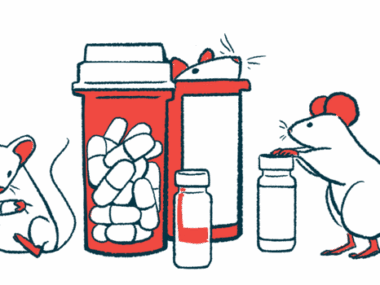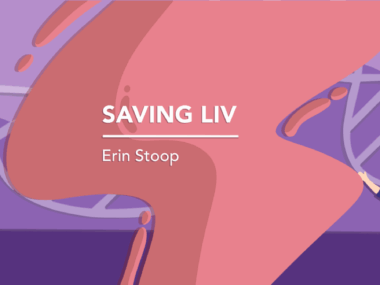High school was a turning point for me and my Sanfilippo sister
How I cherish the good memories of those years of sisterhood together
Written by |

I’ve written a lot about the past. My relationship with Abby, my sister, hasn’t always been the best, and it’s something I think about often. As I reflect on my relationship with her, I think about one of the biggest turning points, and how grateful I am for that period in my life.
Abby has Sanfilippo syndrome, a rare, terminal disease that has taken many of her basic life skills. She’s about two and a half years older than me, so I’ve spent my entire life with her. When we were younger, I felt a lot of resentment about not having a “normal” sibling relationship, when she had early symptoms but we didn’t know she had the disease.
A lot changed as we got older. I realized the beauty in our one-of-a-kind relationship and appreciated it more.
Life in high school
This gift seemed especially evident in high school. Once I had my driver’s license, she rode with me to school, and I felt responsible for her. I’d purposefully stop by her classroom in between classes and peek in at whatever her class was doing, then go to my own class with my shoulders a little less tense, knowing she was OK. And of course, I always looked forward to seeing her around the building with her classmates.

Emily’s sister, Abby Wallis, on an after-school trip to the park in 2016. (Courtesy of Emily Wallis)
One of my favorite memories from this time was in December 2015. Just like any other day, I walked from my last class to the parking lot, where Abby waited for me with her teacher. Abby had a big smile on her face and handed me a blue piece of construction paper. All of her classmates had signed their names on it with a small drawing. Across the top, her teacher had written, “Happy birthday, Emily!”
I was part of a peer assistance and leadership program, or PAL, in high school. As part of it, we traveled to elementary schools to mentor students, but we also spent one day a week with Abby’s class. We played games, did crafts, and spent time with Abby and her classmates. Watching my friends interact with her was so important to me. I loved seeing her so happy and engaged with others.
Abby and I would often go to Sonic or Starbucks for an after-school treat. On our drive home, we talked about what she did during her day and what we were going to do with the rest of our day. One of my friends would occasionally ride home with us, and we’d go somewhere together. Even after coming home, Abby would sometimes sit with me as I completed my homework or played games on our family computer.
Despite how much I cherish these memories, I can’t help but feel sad as well. Abby was diagnosed with Sanfilippo syndrome about a year and a half after I graduated from high school. The decline that’s happened since is heartbreaking. She can no longer walk without assistance and has no functional language left. These memories are cruel reminders of how much this disease has taken from her.
I felt closest to Abby during those high school years. We spent so much joyous time together, and I’m grateful for that. I find comfort in those memories, as Sanfilippo syndrome will never be able to take them away.
Note: Sanfilippo News is strictly a news and information website about the syndrome. It does not provide medical advice, diagnosis, or treatment. This content is not intended to be a substitute for professional medical advice, diagnosis, or treatment. Always seek the advice of your physician or other qualified health provider with any questions you may have regarding a medical condition. Never disregard professional medical advice or delay in seeking it because of something you have read on this website. The opinions expressed in this column are not those of Sanfilippo News or its parent company, Bionews, and are intended to spark discussion about issues pertaining to Sanfilippo syndrome.







Leave a comment
Fill in the required fields to post. Your email address will not be published.